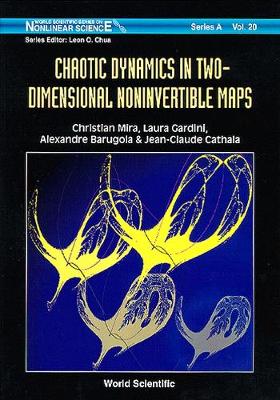World Scientific Series on Nonlinear Science Series A
2 primary works
Book 20
Chaotic Dynamics In Two-dimensional Noninvertible Maps
by Alexandra Barugola, Jean-claude Cathala, Laura Gardini, and Christian Mira
Published 1 January 1996
This book is essentially devoted to complex properties (Phase plane structure and bifurcations) of two-dimensional noninvertible maps, i.e. maps having either a non-unique inverse, or no real inverse, according to the plane point. They constitute models of sets of discrete dynamical systems encountered in Engineering (Control, Signal Processing, Electronics), Physics, Economics, Life Sciences. Compared to the studies made in the one-dimensional case, the two-dimensional situation remained a long time in an underdeveloped state. It is only since these last years that the interest for this research has increased. Therefore the book purpose is to give a global presentation of a matter, available till now only in a partial form. Fundamental notions and tools (such as "critical manifolds"), as the most part of results, are accompanied by many examples and figures.
Book 95
The investigation of dynamics of piecewise-smooth maps is both intriguing from the mathematical point of view and important for applications in various fields, ranging from mechanical and electrical engineering up to financial markets. In this book, we review the attracting and repelling invariant sets of continuous and discontinuous one-dimensional piecewise-smooth maps. We describe the bifurcations occurring in these maps (border collision and degenerate bifurcations, as well as homoclinic bifurcations and the related transformations of chaotic attractors) and survey the basic scenarios and structures involving these bifurcations. In particular, the bifurcation structures in the skew tent map and its application as a border collision normal form are discussed. We describe the period adding and incrementing bifurcation structures in the domain of regular dynamics of a discontinuous piecewise-linear map, and the related bandcount adding and incrementing structures in the domain of robust chaos. Also, we explain how these structures originate from particular codimension-two bifurcation points which act as organizing centers. In addition, we present the map replacement technique which provides a powerful tool for the description of bifurcation structures in piecewise-linear and other form of invariant maps to a much further extent than the other approaches.

